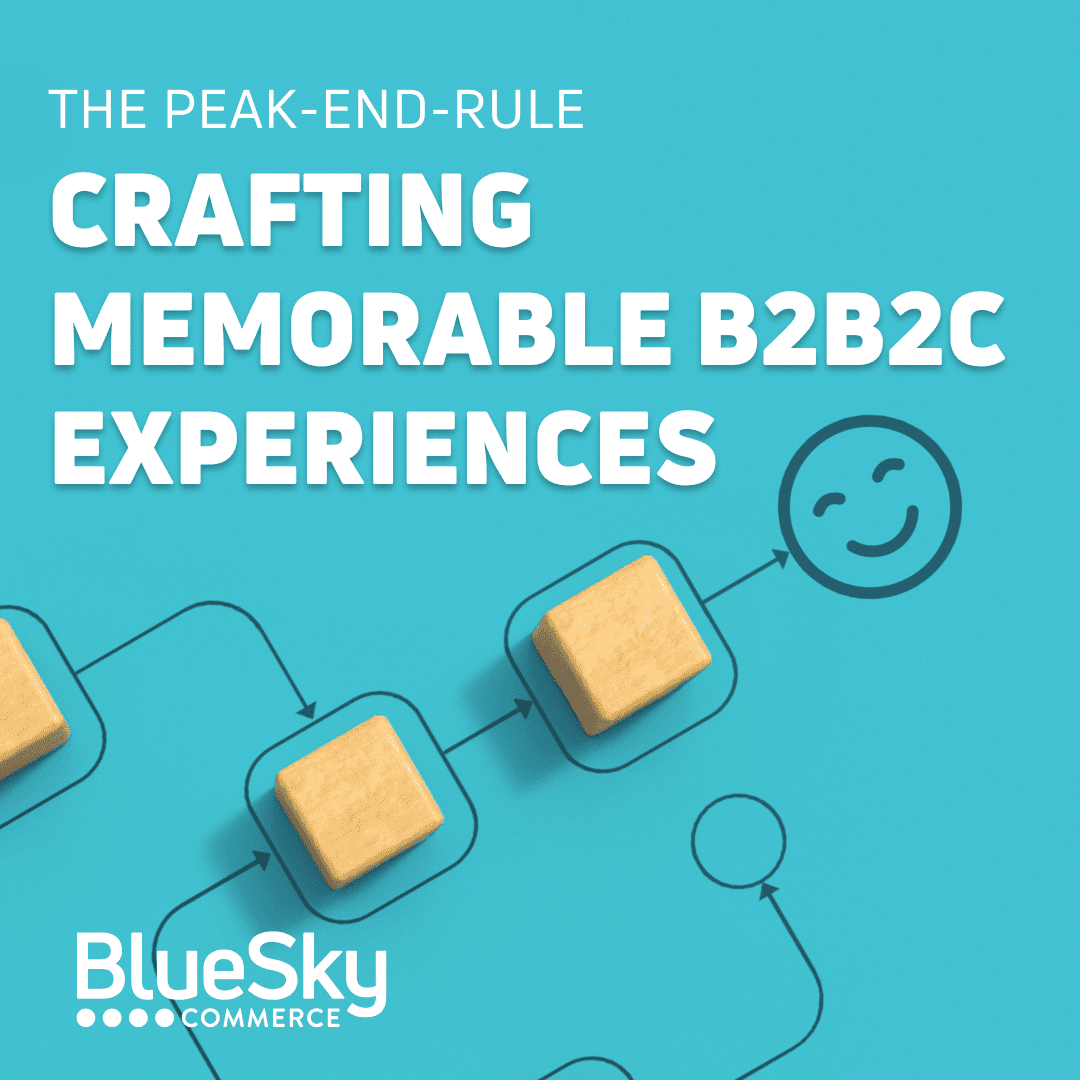Picture this: You’ve just finished a grueling workout at the gym. Your muscles ache, and you’re drenched in sweat, but the staff hands you a cold, refreshing smoothie as you leave. Suddenly, your entire gym experience feels fantastic. This, my friend, is the peak-end rule in action.
The peak-end rule, a psychological principle discovered by Nobel laureate Daniel Kahneman, offers valuable insights into how we can shape these impressions effectively. The peak-end rule states that people judge an experience based on two key moments: the most intense point (the peak) and the conclusion (the end). This principle has profound implications for B2B2C companies aiming to optimize their customer experience across multiple touchpoints.
Why the Peak-End Rule Matters in B2B2C
In B2B2C scenarios, your business interacts with both other businesses and end consumers. Each interaction presents an opportunity to create memorable peaks and positive endings. By focusing on these critical moments, you can:
- Enhance brand perception across the value chain
- Increase customer loyalty and retention
- Drive positive word-of-mouth marketing
- Improve overall satisfaction scores
Applying the Peak-End Rule in B2B2C
To leverage the peak-end rule effectively, consider these strategies:
- Identify key touchpoints: Map out the entire customer journey, including interactions with your business partners and end consumers.
- Create positive peaks: Design standout moments that exceed expectations at crucial stages of the journey.
- End on a high note: Ensure that the final interactions in any process or transaction leave a positive, lasting impression.
- Manage expectations: Set realistic expectations early to avoid disappointment and create opportunities for positive surprises.
- Address pain points: Identify and mitigate negative experiences, especially those occurring near the end of interactions.
It’s important to note that the peak-end rule doesn’t just apply to a single, isolated experience. In fact, customers encounter multiple peak-end moments throughout their journey with a brand. For example, at the top of the funnel, a potential customer might have a peak moment when they discover a compelling piece of content that addresses their pain point, ending with an easy newsletter sign-up. During the online purchase process, the peak could be finding the perfect product, while the end might be a seamless checkout experience. Immediately after purchase, customers might experience a moment of “buyer’s remorse” as the peak. However, this can be countered with a positive end through a thoughtful order confirmation email or an unexpected freebie. Even in the case of returns, opportunities exist to create positive peak-end experiences. The peak might be the frustration of returning an item, but the end could be a hassle-free return process and a personalized thank-you note for their feedback.
By recognizing these multiple touchpoints, businesses can strategically design their customer experience to create positive peak-end moments at each stage of the journey, ultimately shaping a more favorable overall memory of the brand.
Checklist: Are You Creating Peak-End Moments?
Use this checklist to assess whether you’re effectively implementing the peak-end rule in your B2B2C operations:
- Have you mapped out the entire customer journey, including B2B and B2C touchpoints?
- Are there identifiable peak moments in your customer interactions?
- Do you have strategies in place to create positive endings for each major interaction?
- Have you trained your staff and partners to recognize and capitalize on peak-end opportunities?
- Are you collecting and analyzing feedback to identify potential peak and end moments?
- Do you have processes in place to quickly address negative experiences, especially near the end of interactions?
- Are you leveraging technology to enhance peak moments and smooth out endings (e.g., personalized follow-ups, streamlined checkout processes)?
- Have you considered the emotional impact of your interactions, not just the functional aspects?
The Cost of Neglecting the Peak-End Rule
Failing to implement the peak-end rule in your B2B2C strategy can lead to significant costs:
- Lost business opportunities: Customers may choose competitors who provide more memorable experiences.
- Decreased customer lifetime value: Customers are less likely to return or upgrade services without strong positive memories.
- Negative word-of-mouth: Poor experiences, especially at the end of interactions, can lead to damaging reviews and recommendations.
- Increased customer acquisition costs: As retention rates drop, more resources must be allocated to acquiring new customers.
- Lower employee morale: Consistently dealing with dissatisfied customers can negatively impact staff motivation and performance.
The peak-end rule offers a powerful framework for enhancing B2B2C experiences. Businesses can significantly improve satisfaction, loyalty, and overall success by creating positive peaks and endings throughout the customer journey. Use the provided checklist to assess your current strategies and identify areas for improvement.
Let’s discuss how we can create unforgettable moments for your customers. We are passionate about turning everyday interactions into memorable experiences and know that recognizing and creating peak-end moments can provide quick financial wins for your business. Reach out to me at lori.winkler@blueskycommerce.io, and let’s explore how we can apply these insights to your business. Your customers’ memories are waiting to be shaped – let’s make them extraordinary!





